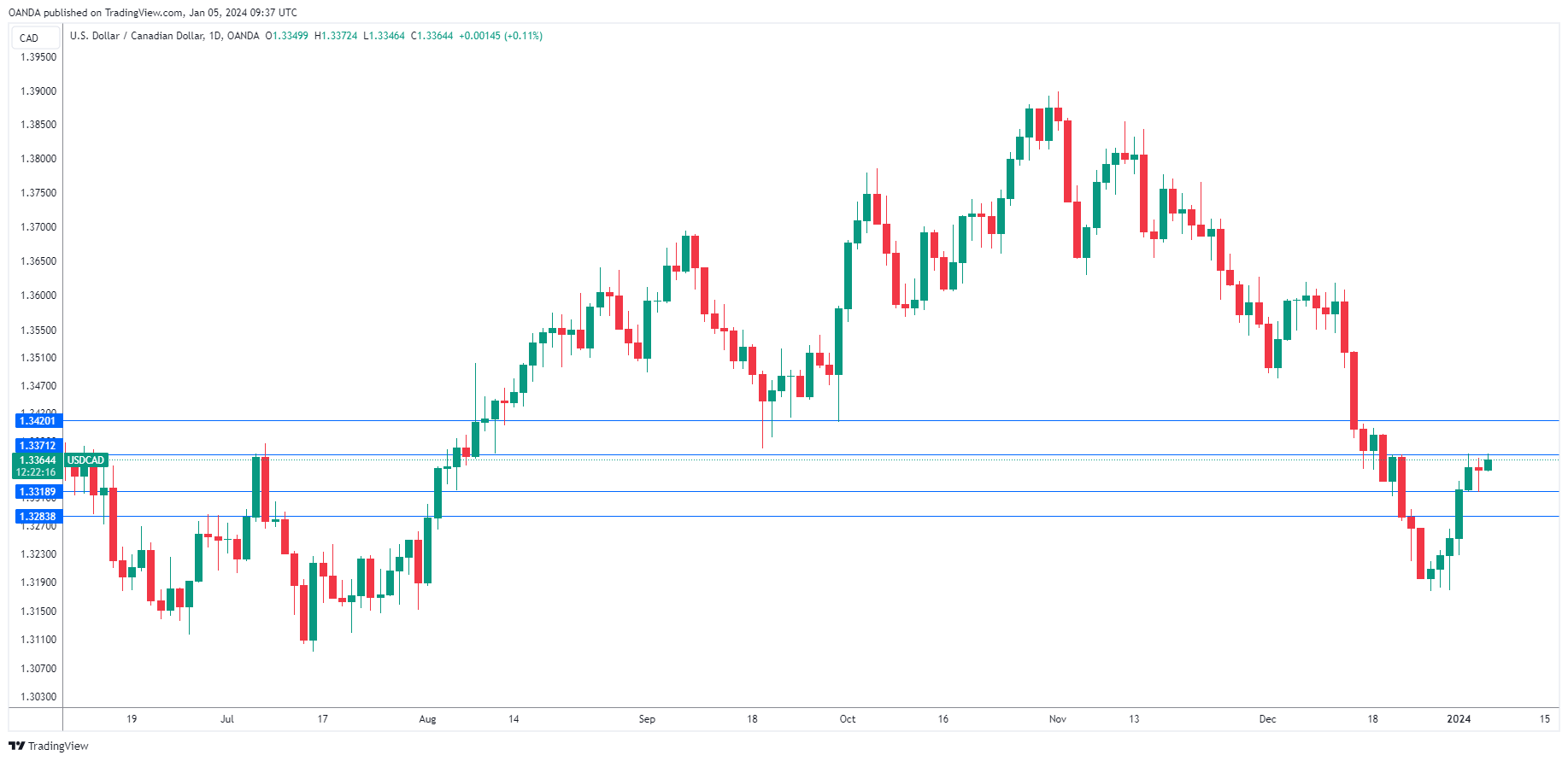- US nonfarm payrolls expected to rise to 199,000
- Canada’s employment change projected to drop to 13,500
The Canadian dollar is showing limited movement on Friday, but that could change in the North American session when Canada and the US release the December employment reports. In the European session, USD/CAD is trading at 1.3363, up 0.10%.
The Canadian dollar looked sharp in December, with gains of 2.27%. However, the Canadian dollar has sagged since December 27, declining 1.2% against the US dollar.
US Nonfarm Payrolls Expected to Accelerate
The markets are eagerly waiting for the first nonfarm payrolls report of the year. The Fed’s surprise pivot at the December meeting has energized the equity markets, as the Fed is finally on board with trimming rates in 2024. The minutes from the meeting indicated that the Fed remains uncertain when it will start to lower rates, but clearly that the timing will very much depend on inflation and employment data.
Nonfarm payrolls are expected to rise to 199,000 in December, up from 170 thousand in November. If the release is wide of the estimate, we could see some volatility from the US dollar. The unemployment rate is expected to tick higher to 3.8%, compared to 3.7% in November. The markets will be keeping an eye on wage growth, which is projected to ease to 3.9% y/y, compared to 4.0% in October. This would mark the lowest annual gain since mid-2021. Fed policymakers will be pleased if the releases are within expectations, as it would indicate that the labor market remains solid but is slowly cooling.
The US will also release the ISM Services PMI for December. The services sector expanded for 11 straight months and is expected at 52.7 for December, little changed from 52.6 a month earlier.
Canada also releases its job report later today. Job growth has been modest over the past two months and is expected to dip to 13,500 in December, down from 24,900 in November. Wages have been running at 5%, a high level which is driving inflation.
USD/CAD Technical
- USD/CAD tested support at 1.3262 earlier
- There is resistance at 1.3262 and 1.3289
